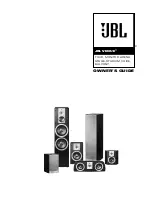
MISCELLANEOUS INFORMATION
37
Busy Queuing
The busy queuing feature places the call in a queue if the repeater
system is busy when the call is placed. Then when the system becomes
available, a tone sounds and the call can be placed if desired. Busy
queuing is either enabled or disabled on all Multi-Net systems by system
operator programming. It functions with both standard and special calls.
It is not available on LTR or conventional systems.
The Busy Queuing feature operates as follows: If the radio system is
busy, the busy tone sounds. (Without queuing, no tone sounds because the
clear-to-talk tone sounds only when a successful access is made.) The
queue mode is then entered automatically when the PTT switch is
released. The queue mode is indicated when “QUEUED” is displayed
and the busy tone turns off. Then when the system becomes available,
either a beeping tone or dial tone sounds. The beeping tone is heard if a
standard call is being made, and the dial tone is heard if a special call is
being made. The call can then be placed in the normal manner.
If no call is placed soon after the tone sounds, the queue mode is
automatically exited and normal operation resumes. The queue mode is
also exited if a call is received on the selected group, the system/group is
changed, the push-to-talk switch is pressed, or any other keys directly
under the display are pressed (while no call is being received).
Calls are received normally while in the queue mode. Group scan-
ning continues if it is programmed on the selected system. However,
system scanning is temporarily disabled, so calls are not received on
other systems. If a call is received on some other group while in queue,
you can respond to the call without affecting the queued call. Normal
queuing of a call resumes shortly after the call on the other group is
finished.
System Operator Programming
As noted in the descriptions of many of the features of this trans-
ceiver, programming by your system operator may determine availability
and how they operate. If you require more information on how a partic-







































